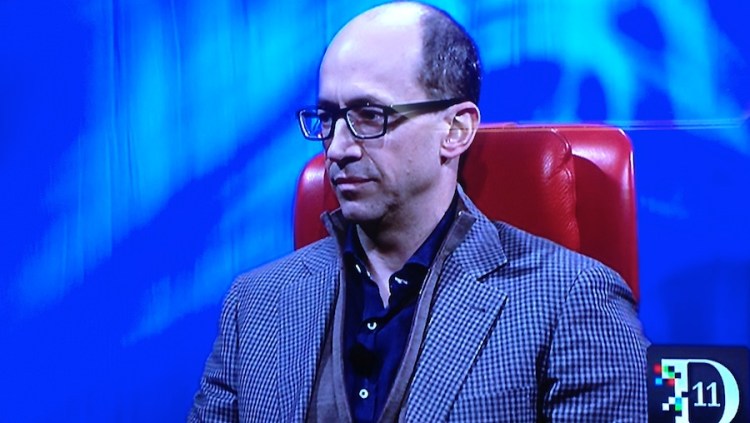Twitter announced on Sept. 12 that it had filed a confidential S-1 in preparation for going public. The questions are: Why? Why now? And what will the IPO do to the Twitter we know and love?
Why now?
This question is the easiest one to answer. Now is an ideal time for Twitter for a host of reasons.
First, Facebook’s stock has recovered to its IPO levels, meaning that the last big consumer Internet IPO is no longer a failure. Instead, Facebook’s public offering was merely a very delayed success. That should make public-market investors much more receptive to Twitter’s IPO.
Second, Twitter’s revenue is now approaching $500 million annually. The company has a solid financial story with consistent growth behind it. In contrast to several years ago, when it had massive usage numbers but no real business model, Twitter now has a substantial and growing advertising business.
Third, Twitter now has all the components in place to turn on afterburners on its growth engine. Its recent acquisition of ad exchange MoPub means that it now operates a market for real-time bidding on advertising, not just on Twitter itself but throughout the advertising ecosystem. And Twitter is preparing even more adjustments to its online and app experiences that will undoubtedly bring in even more advertising revenue.
Finally, thanks to the JOBS Act, Twitter can test the waters for its IPO in complete secrecy, getting feedback from insiders and tweaking its financials to avoid either Groupon-like embarrassment or Facebook-like over-promising.
Why IPO at all?
But why go public at all? Apart from chief executive Dick Costolo’s ego, who benefits?
The initial public offering is the ideal exit, in many ways. It generates cash for the company’s investors and employees, and it creates a fully-liquid market for trading in the company’s stock, which can simplify later fundraising (via secondary public offerings). It does all this while leaving the company’s existing executive leadership and board in place. So, in contrast to an acquisition, the potential upside is bigger and there’s no loss of control.
In contrast to remaining private, however, going public imposes a huge burden. Twitter will soon have to go on the road, explaining its financials in great details to potential public-market investors all over the country. Although its S-1 remains confidential for now, it will become public 21 days before the roadshow commences, and that will subject the company to intense scrutiny from investors as well as grubby-fingered journalists. And, once public, Twitter will have to make regular quarterly announcements about its financials and its business strategy, which will expose some — but not all — of its internal workings to competitive analysis.
In addition, there’s now research that suggests the level of innovation starts to decline after an IPO. Stanford business school professor Shai Bernstein published a paper last year, “Does Going Public Affect Innovation?” (.pdf), which answers its own rhetorical question with a decided “Yes.”
Bernstein studied the innovation levels at pre- and post-IPO companies by analyzing the number of patents awarded to those companies and their employees, while weighting patent awards for significance based on how often they are cited in scientific literature.
Cutting to the chase, Bernstein wrote in the paper’s abstract that “the quality of internal innovation declines following the IPO and firms experience both an exodus of skilled inventors and a decline in productivity of remaining inventors.” In other words, employees cash out (once the lockup period expires) and take their new-found wealth elsewhere, either starting new companies or (presumably) buying small Caribbean island resorts and/or San Francisco real estate, and retiring to a life of leisure marked by ukuleles, flip-flops, and coffee shops.
However, Bernstein wrote, “public firms attract new human capital and acquire external innovations.” In other words, with the new-found capital that a public company commands, it is able to hire talented (but more risk-averse) inventors, or acquire smaller companies, in order to give itself innovation infusions.
Worse still, Bernstein found that the management of public companies tends to operate in a more conservative way, clamping down on innovation.
“I see substantial decline in the quality of the work after the I.P.O.,” Bernstein told the New York Times.
What will change?
So the future Twitter will look something like this: It’ll be bigger, more powerful, and will generate a spate of Twitter millionaires who will fan out across San Francisco spawning startups and angel funds of their own. Costolo, who was once a stand-up comedian, will be the CEO of a major publicly-traded consumer Internet company. And Twitter, the company, will have a much bigger war chest for its battle with Facebook.
But its creativity will probably decline. It will acquire smaller companies to replace the inventiveness that it used to get from its employees.
And from the consumer perspective, Twitter will become more saturated with ads, in a variety of formats, as the company seeks to maximize its revenue and ensure that it continues meeting its quarterly targets.
VentureBeat's mission is to be a digital town square for technical decision-makers to gain knowledge about transformative enterprise technology and transact. Learn More







